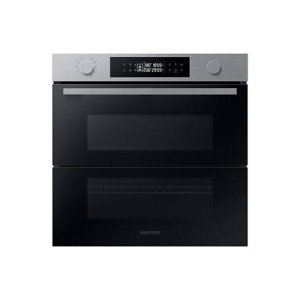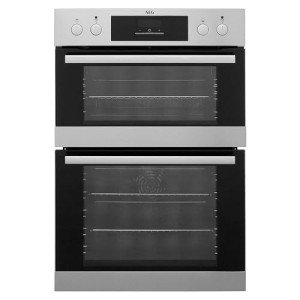10 Life Lessons We Can Learn From Built In Electric Oven
페이지 정보

본문
The Comprehensive Guide to Built-in Electric Ovens and Hobs
In today's busy world, modern kitchen appliances have actually evolved drastically to deal with the tastes and requirements of modern house owners. Among these appliances, built-in electric ovens and hobs stand out for their effectiveness, design, and functionality. This post explores the features, advantages, installation tips, and maintenance of built-in electric ovens and hobs, together with dealing with often asked concerns.

Understanding Built-in Electric Ovens
What Is a Built-in Electric Oven?
A built-in electric oven is a device designed to be installed into a wall or kitchen cabinetry, providing a smooth, best integrated ovens appearance in the kitchen. Unlike freestanding fitted ovens, built-in designs conserve space and frequently come equipped with extra functions such as self-cleaning cycles, convection cooking, and numerous cooking modes.
Types of Built-in Electric Ovens
- Single Ovens: Ideal for smaller kitchens or those who cook for fewer individuals.
- Double Ovens: Offer more cooking space, ideal for bigger households or those who entertain often.
- Mix Ovens: These include both a conventional oven and a microwave, offering versatile cooking alternatives.
Advantages of Built-in Electric Ovens
| Advantage | Description |
|---|---|
| Space-Saving Design | Fits perfectly into cabinetry, releasing up counter space. |
| Enhanced Aesthetics | Produces a modern-day, expert kitchen appearance. |
| Versatile Cooking Options | Typically features multiple cooking modes consisting of bake, broil, and convection. |
| Energy Efficient | Consumes less energy than conventional ovens. |
Understanding Built-in Hobs
What Is a Built-in Hob?
A built-in hob is a cooking surface area installed into the kitchen countertop, integrating flawlessly with the kitchen style. Available in electric, induction, and gas ranges, electric hobs are renowned for their precision and ease of usage.
Types of Built-in Hobs
- Electric Hobs: Traditional coil components that heat by means of electrical resistance.
- Induction Hobs: Use magnetic energy to heat just the cookware, making them quicker and more secure.
- Ceramic Hobs: Feature a smooth surface with convected heat underneath, providing easy installation built in ovens cleaning.
Advantages of Built-in Hobs
| Advantage | Description |
|---|---|
| Fast Cooking Times | Electric hobs heat quickly, lowering overall cooking time. |
| Easy to Clean | Flat surface enables quick and straightforward cleaning. |
| Resilient | Traditionally built to last and stand up to heats. |
| Versatile Compatibility | Works well with various pots and pans products. |
Setup Considerations
Installing a built-in electric oven and hob requires cautious planning.
Steps for Installation
- Procedure the Space: Ensure the dimensions of the oven and hob match the allocated area in your kitchen.
- Inspect Electrical Requirements: Consult an electrician to make sure circuitry can handle the home appliance's power needs.
- Placement of Appliances: Position the oven at a practical height, generally between waist and eye level.
- Ventilation: Ensure correct ventilation, especially if your oven integrates a range hood.
Essential Tools
- Power drill
- Screwdrivers
- Level
- Determining tape
Safety Precautions
- Always disconnect the power before setup.
- Follow producer instructions thoroughly.
- Consider employing an expert for electrical connections.
Maintenance Tips
Preserving built-in electric ovens and hobs is important for longevity and efficiency.
Regular Care Routine
- Cleaning up the Surface: Use a soft fabric and manufacturer-recommended cleaner.
- Checking Electrical Connections: Check cords and plug for damages occasionally.
- Cleaning up Filters: If the oven has a ventilator, tidy or replace the filters as required.
Troubleshooting Common Issues
| Issue | Possible Solution |
|---|---|
| Oven Won't Heat | Check the power supply and heating element. |
| Heating Inconsistency | Examine the thermostat and oven calibration. |
| Hob Not Heating | Ensure pots and pans works and inspect the power supply. |
Regularly Asked Questions
1. How do I pick the ideal size built-in electric oven?
Picking the ideal size includes measuring your kitchen area and thinking about just how much cooking you generally do. If you captivate frequently or have a large household, easy installation built in ovens go with a double oven.
2. Are built-in electric hobs safe to use?
Yes, built-in electric hobs are safe, especially induction hobs which just heat the pots and pans, decreasing the threat of burns.
3. Can I set up a built-in oven and hob myself?
While it is possible for skilled DIY enthusiasts, employing a professional is suggested, particularly for the electrical connections.
4. How often should I clean my built-in oven and hob?
Cleaning ought to be done frequently after usage, with deep cleansing periods depending on cooking frequency - normally every few months.
5. Do built-in appliances require unique maintenance?
Built-in appliances require comparable maintenance to freestanding models, but correct care should be taken with their surrounding kitchen cabinetry.
Built-in electric ovens and hobs present a fusion of technology and style, providing efficiency and contemporary aesthetic appeals to any kitchen. With appropriate selection, cautious installation, and regular upkeep, these appliances can enhance one's cooking experience for many years. Understanding the features, benefits, and care requirements can empower homeowners to produce the kitchen of their dreams-- effectively and stylishly.
As kitchens continue to progress into central centers of the home, picking the ideal built-in services plays an important role in daily culinary creativity and pleasure.

- 이전글What's The Job Market For Inbuilt Ovens Professionals? 25.05.19
- 다음글Railroad Settlement Cll: 10 Things I'd Like To Have Learned Sooner 25.05.19
댓글목록
등록된 댓글이 없습니다.



